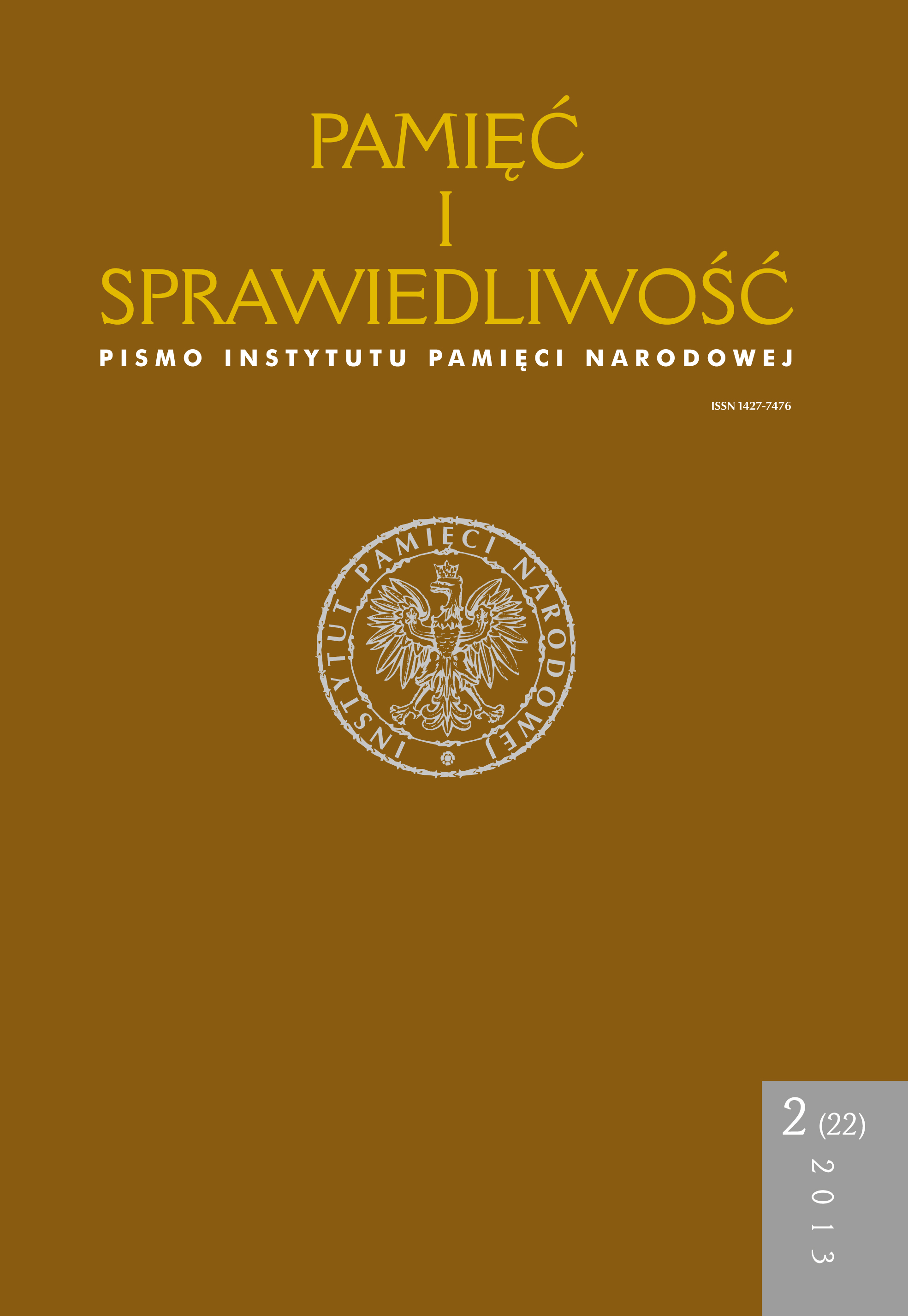Atrakcyjność komiksu historycznego na tle wymagań stawianych twórcom komiksowym przez historię i sztukę
Pamięć i Sprawiedliwość, V. 22 N. 2 (2013), pages: 11-34
Publication date: 2013-12-30
Abstract
Riferimenti bibliografici
B. Janicki, Polski komiks historyczny (lata 1920–2010), Opole 2010. - R.A. Rosenston, Historia w obrazach/historia w słowach. Rozważania nad możliwością przedstawienia historii na taśmie filmowej, [w:] Film i historia. Antologia, red. Iwona Kurz, Warszawa 2008. - H. White, W stronę historyczno-materialistycznych badań nad recepcja filmu [w:] Film i historia. Antologia, red. I. Kurz, Warszawa 2008. - J. Szyłak, Komiks w kulturze ikonicznej XX wieku. Wstęp do poetyki komiksu, Gdańsk 1999. - J. Szyłak, Komiks: świat przerysowany, Gdańsk 1998. - J. Szyłak, Poetyka komiksu. Warstwa ikoniczna i językowa, Gdańsk 2000 - Krzysztof Teodor Toeplitz, Sztuka komiksu, Warszawa 1985. - To świat sztuki jest gettem. Rozmowa z Jerzym Szyłakiem, badaczem i teoretykiem komiksu, wykładowcą Uniwersytetu Gdańskiego [w:] S. Frąckiewicz, Wyjście z getta. Rozmowy o kulturze komiksowej w Polsce, Warszawa 2012. - A. Rusek, Leksykon polskich bohaterów i serii komiksowych, Poznań 2010. - A. Rusek, Od rozrywki do ideowego zaangażowania. Komiksowa rzeczywistość w Polsce w latach 1939–1955, Warszawa 2011. - A. Rusek, Tarzan, Matołek i inni. Cykliczne historyjki obrazkowe w Polsce w latach 1919–1939, Warszawa 2001. - M. Krzanicki, Komiks w PRL, PRL w komiksie, Rzeszów 2011. - M. Misiora, Bibliografia komiksów wydanych w Polsce w latach 1905(1859)–1999, Poznań 2010. - 45–89. Comics behind the iron curtain (wersja polska), Poznań 2010. - T. Pilcher, Komiks erotyczny. Od narodzin do lat 70. XX stulecia, Warszawa 2011. - J. Czaja, Historia Polski w komiksowych kadrach, Poznań 2010. - Michał Błażejczyk, Litera a duch historii, „Zeszyty Komiksowe” 2011, nr 12. - Epizody z Auschwitz, scen. M. Gałek, cz. 1: Miłość w cieniu zagłady, rys. M. Nowakowski, cz. 2: Raport Witolda, rys. A. Klimek, cz. 3: Ofiara, rys. Ł. Poller, cz. 4: Nosiciele tajemnicy, rys. M. Pyteraf, Oświęcim–Babice 2009–2011. - H. White, Proza historyczna, Kraków 2009. - Złote pszczoły. Żydzi międzywojennej Warszawy. Antologia komiksów, scen. M. Powalisz, rys. Z. Dzierżawska, O. Wróbel, M. Konopacka, A. Nowicka, J. Jurczak, A. Czarnota, Warszawa 2011. - Antologia komiksów City Stories – 5 Grunwald 1410–2010, Warszawa 2010. - M. Bogucka, Sztuka w historii. Kilka refleksji historyka [w:] Dzieło sztuki. Źródło ikonograficzne czy coś więcej? Materiały sympozjum XVII Powszechnego Zjazdu Historyków w Krakowie, 15–18 września 2004, Warszawa 2005. - M. Pawłowska, Poetyki starożytne: Platon, Poetyki starożytne: Arystoteles [w:] Mimesis a teorie siedemnastowiecznej powieści francuskiej, Wrocław 2011. - J. Krzyżanowski, Sztuka słowa, Warszawa 1984. - 1956. Poznański Czerwiec, scen. M. Jasiński. W. Tkaczyk, W. Żwikiewicz, rys. J. Michalski, Poznań 2006. - J. Kubert, Josel. 19 kwietnia 1943, Warszawa 2006. - Kroniki epizodów wojennych – 1 – Westerplatte: Załoga śmierci, scen. M. Wójtowicz-Podhorski, rys. K. Wyrzykowski, Gdańsk 2004. - Kroniki epizodów wojennych – 2 – Pierwsi w boju, scen. M. Wójtowicz-Podhorski, rys. J. Przybylski, Poznań 2010. - 1940 Katyń – Zbrodnia na nieludzkiej ziemi, scen. T. Nowak, W. Tkaczyk, rys. K. Gawronkiewicz, J. Michalski, J. Ozga, Poznań 2010. - S. Buryła, Legenda Westerplatte w tekstach literackich [w:] Niepiękny wiek XX, red. B. Brzostek i in., Warszawa 2010. - T. Kudliński, Wstęp [w:] K. Bunsch, Nowele zebrane, Warszawa 1986. - J. Białostocki, O elementach twórczych w pracy humanisty [w:] Refleksje i syntezy ze świata sztuki, Warszawa 1978. - J. Szyłak, Komiks w kulturze ikonicznej XX wieku, Gdańsk 1999. - A. Chomiuk, Między słowem a przeszłością. Strategie dokumentarne w polskiej powieści historycznej ostatniego półwiecza, Lublin 2009. - M. Śledziński, Na szybko spisane 1980–1990, Warszawa 2007. - Na szybko spisane 1990–2000, scenariusz i rysunki Michał „Śledziu” Śledziński, Warszawa 2008. - Achtung. Zelig!, scen. K. Rosenberg, rys. K. Gawronkiewicz, Warszawa–Poznań 2004. - S. Majchrowski, Pan Sienkiewicz, Warszawa 1966. - Arystoteles, Etyka wielka. Poetyka, Warszawa 2010.
 Język Polski
Język Polski
 English
English
 Deutsch
Deutsch
 Français (France)
Français (France)
 Italiano
Italiano
 Русский
Русский


 PDF (Język Polski)
PDF (Język Polski)
